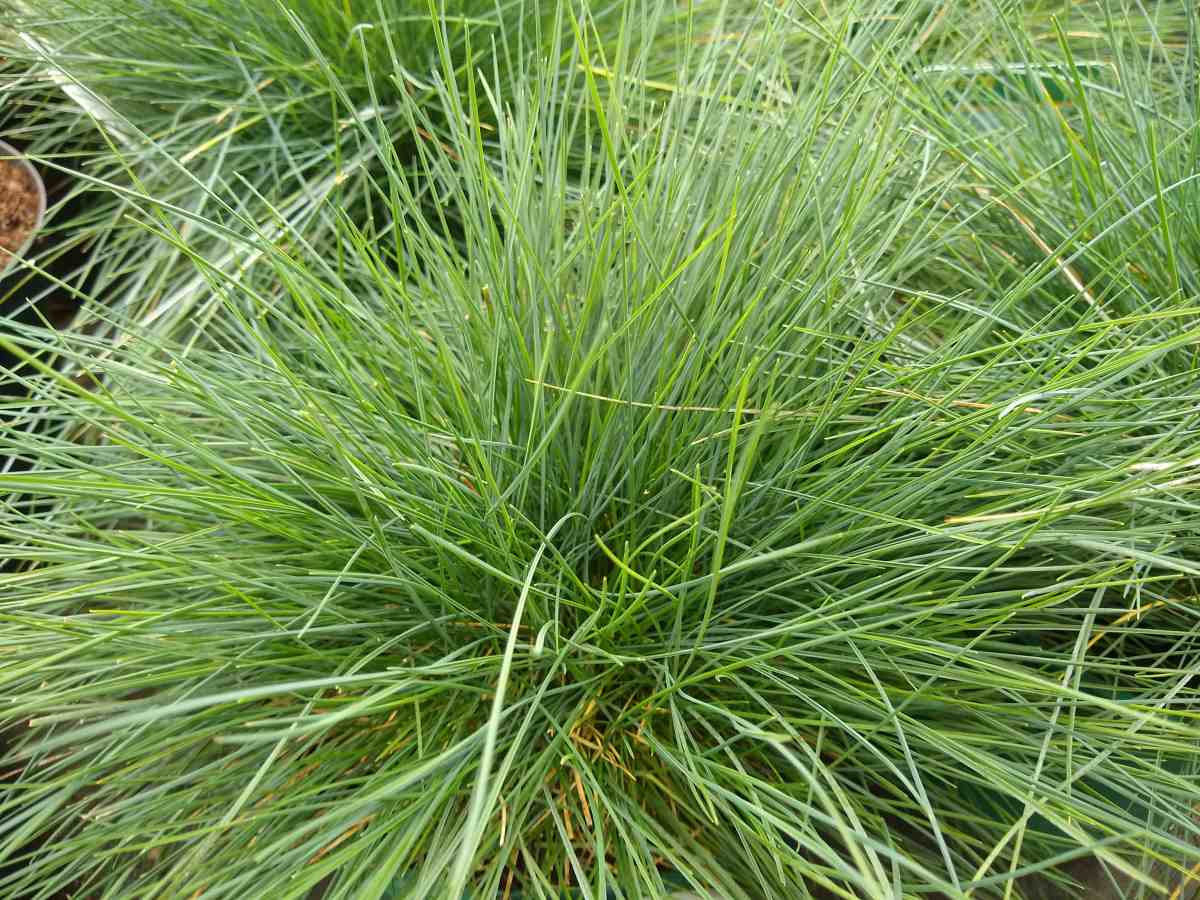
Grass doesn’t always play fair and sometimes just loves to huddle. But why does your grass grow in clumps? It could be due to overwatering, compacted soil, or perhaps just their distinct personality (clumping grass varieties). We’ll explore 6 likely reasons why your grass is clumping.
1. Improper Watering
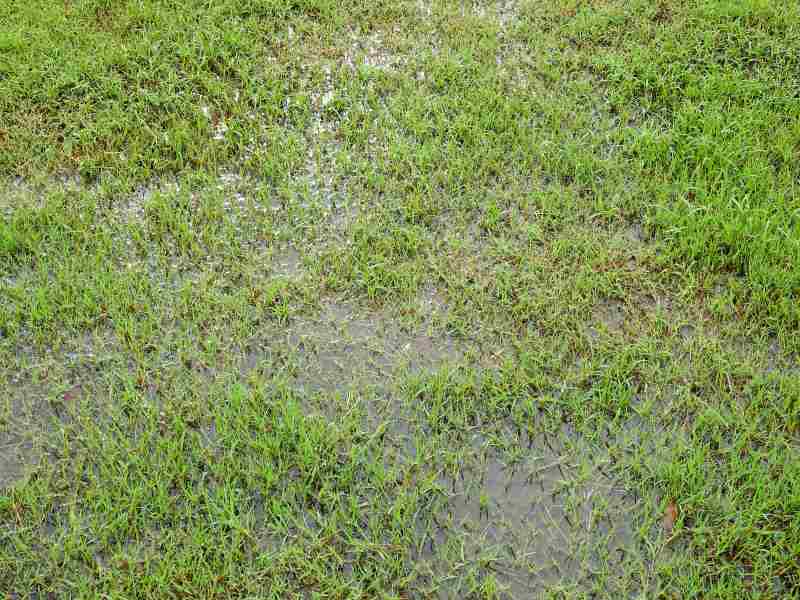
Water is life, but too much of anything can be a problem – even for your grass. Overwatering can lead to a condition called ‘waterlogging,’ which can prevent your grass from establishing deep root systems.
This occurs because water replaces the air in the soil, leading to poor respiration and root growth. As a result, only patches of grass with sufficient drainage will survive and grow – hence, you end up with clumps.
2. Poor Soil Conditions

Your soil can either be your grass’s best ally or its worst enemy. Some of the most common soil issues that can cause grass to grow in clumps include:
- Compaction: If it’s over-compacted, the roots struggle to penetrate deep enough to create a steady growth base. Instead, they stick closer to the surface and contribute to uneven growth.
Heavy foot traffic or machinery use can lead to soil compaction, and with nowhere for the grassroots to spread evenly, you get random patches of lush green amidst barren brown.
- Soil Type: Sandy soils are notorious for clumping grass growth patterns. This is because they drain too quickly and don’t retain enough moisture, meaning the roots can dry out easily unless there’s rain or watering every day. Ideally, your soil should be a mix of sand and clay to ensure good drainage while maintaining excellent water-holding ability.
- pH Imbalance: If your soil’s pH levels lean towards either extreme – too acidic or too alkaline, you might find grass growing in clumps. An ideal soil pH level for most grass types is between 6 and 7. If it falls out of this range, certain essential nutrients become less available to the plants.
3. Poor Mowing Practices
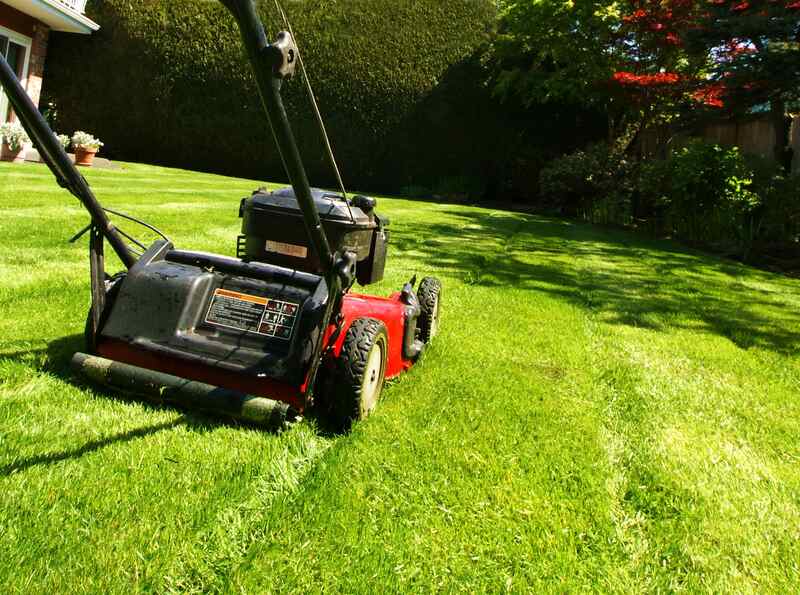
Let’s not point fingers here, but it could be your lawn-mowing habits causing those clumps of grass. One common mistake is cutting when the grass is wet, causing the trimming to stick together and smother patches of your lawn.
Also, flooring your mower to its lowest setting might seem like a time-saving hack; however, it stresses out your grass by exposing too much of the plant to heat and sunlight. This can lead to weakened grass plants with poor root systems, resulting in an irregular clump-like growth pattern across your lawn.
4. Too Many Weeds
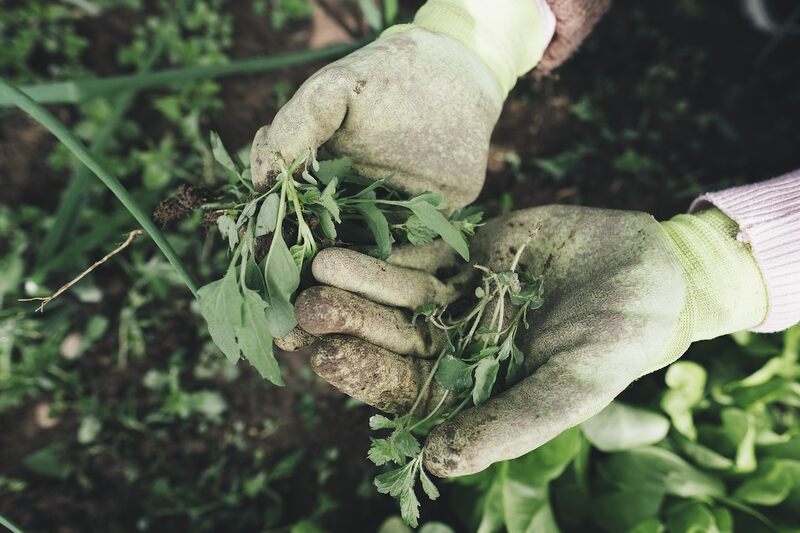
Weeds such as crabgrass are notorious for their clumping growth pattern and their knack for blending perfectly with your regular turf. In fact, the only time you might realize you have an infestation is when these bitter squatters start forming clumps that sour the uniform look of your lawn.
Although it might seem harmless at first, unchecked weed growth can starve your regular grass of vital nutrients and moisture, resulting in a bunch of grass clumps popping up across your lawn.
5. Excess Thatch
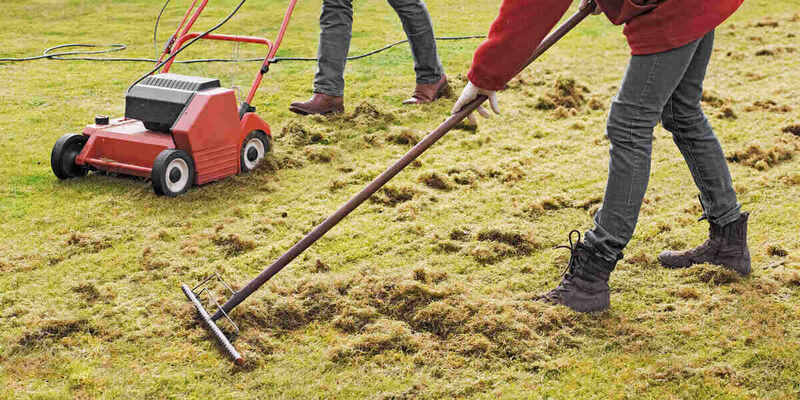
Thatch is an inevitable part of lawn growth. It’s a mixture of dead leaves, grass stems, and other organic matter that accumulates at the base of your grass. When thatch build-up gets too thick, it disrupts your lawn’s normal functioning.
It creates a physical barrier to water and nutrients penetrating your soil and roots. It also becomes a haven for pests and diseases. This can result in uneven growth patterns, with clumps forming where the thatch is thickest. (Interested in learning more about thatch? Take a quick look at our article “What is Thatch in Your Lawn?”)
6. You’re Growing a Clumping Grass Variety
Sometimes, it’s not an issue at all; it’s nature doing its thing. Certain types of grass have a clumping or ‘bunching’ growth habit, such as:
- Zoysia: This sun-loving, warm-season grass is highly drought tolerant. Native to southern states, it has a deep root system. However, insufficient watering can encourage its aggressive growth into conspicuous clumps, potentially leading to an uneven lawn appearance.
- Rough Bluegrass: It is a strong, cool-season grass that thrives in shady areas. Despite these positives, irrigation and fertilization can encourage uncontrolled spreading, potentially overpowering other turfgrasses. Also noteworthy is the species’ quick growth rate, which may lead to clumping and uneven lawns if not managed properly.
- Tall Fescue: This cool-season grass is resilient and drought-tolerant. It thrives in various environments, including shaded areas, and needs minimal watering. However, even with optimal care, it can develop clumps due to its bunch-type growth pattern, which results in a coarse and uneven lawn appearance.
- Bentgrass: This is a cool-season grass variety that is common on golf courses because it forms a dense mat that can withstand heavy foot traffic. However, its aggressive growth can lead to thick patches or clumps in a home lawn.
FAQ About Grass Growing in Clumps
What is a grass clump?
“Grass clumps” can refer to two distinct issues in lawn care:
A dense, circular patch of grass that stands taller and thicker than the surrounding lawn. It can be caused by several factors, including overwatering, compaction in the soil, or due to certain varieties of grass known for their bunch-type growth habit. This issue can be more challenging to manage, depending on the underlying cause.
It also can mean piles of cut grass left after mowing. If not broken up and spread around properly, these clumps could end up harming the healthy grass below. These types of ‘grass clumps’ are easier to take care of. Firstly, don’t mow your lawn when it’s wet. Secondly, rake and redistribute the clippings or bag up and remove them after mowing.
Will clumpy grass fill in?
Yes, clumpy grass can eventually fill in over time if you let nature take its course. However, the process can be pretty slow depending on various factors such as sunlight, watering, and nutrients. If faster results are desired, overseeding or patching could help create a more uniform lawn sooner.
Remember that proper and regular maintenance, including appropriate fertilizing and mowing at the correct height, can encourage your grass to spread uniformly and reduce clumping.
What is clumping fescue?
Clumping fescue is tall fescue grass that grows in bunches or ‘clumps.’ Many people favor it for its ability to tolerate harsh conditions such as high temperatures or drought. On the flip side, because it doesn’t grow uniformly (spread out equally from stolons or rhizomes,) clumping fescue can lead to an unruly-looking lawn, something many homeowners are keen to avoid.
Tackle Grassy Clumps With Pro Help
The first step in busting those naughty grass clumps is figuring out why they’re there. Are they the result of a specific type of grass, how you water, the conditions of your soil, or your mowing routine?
If you’re stumped and can’t really put your finger on what’s causing your lawn to break out in these green bumps, call in a local lawn care professional. They know all the secrets – mowing, watering, aerating, treating – to create a beautiful clump-free turf.
Main Photo Credit: John Caley / Adobe Stock Free / License